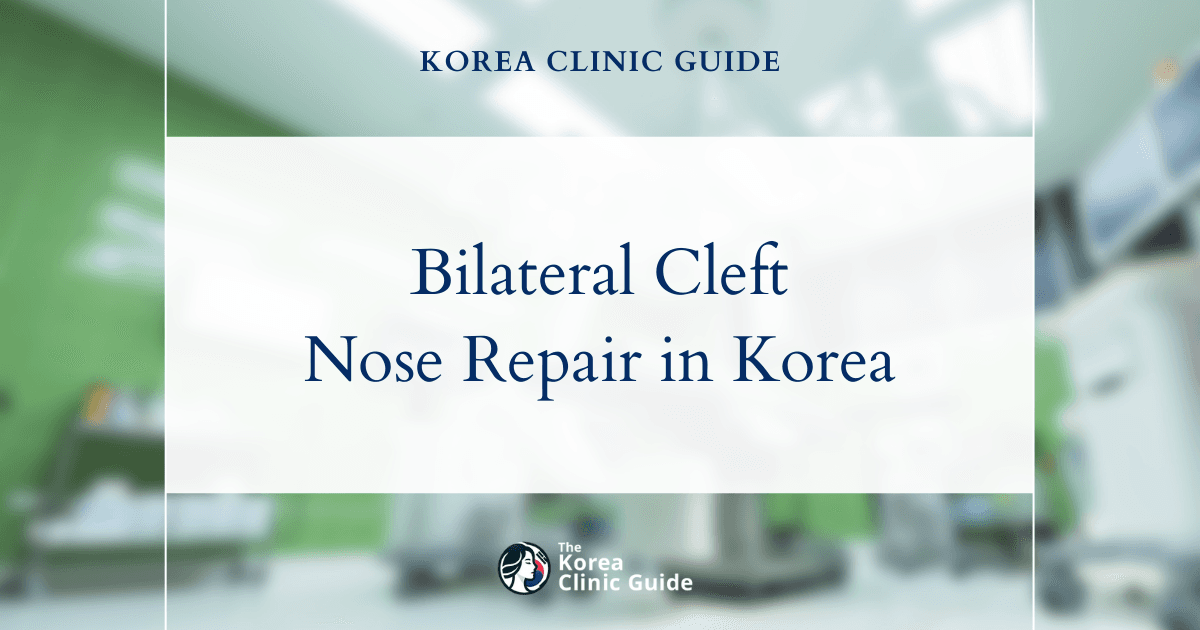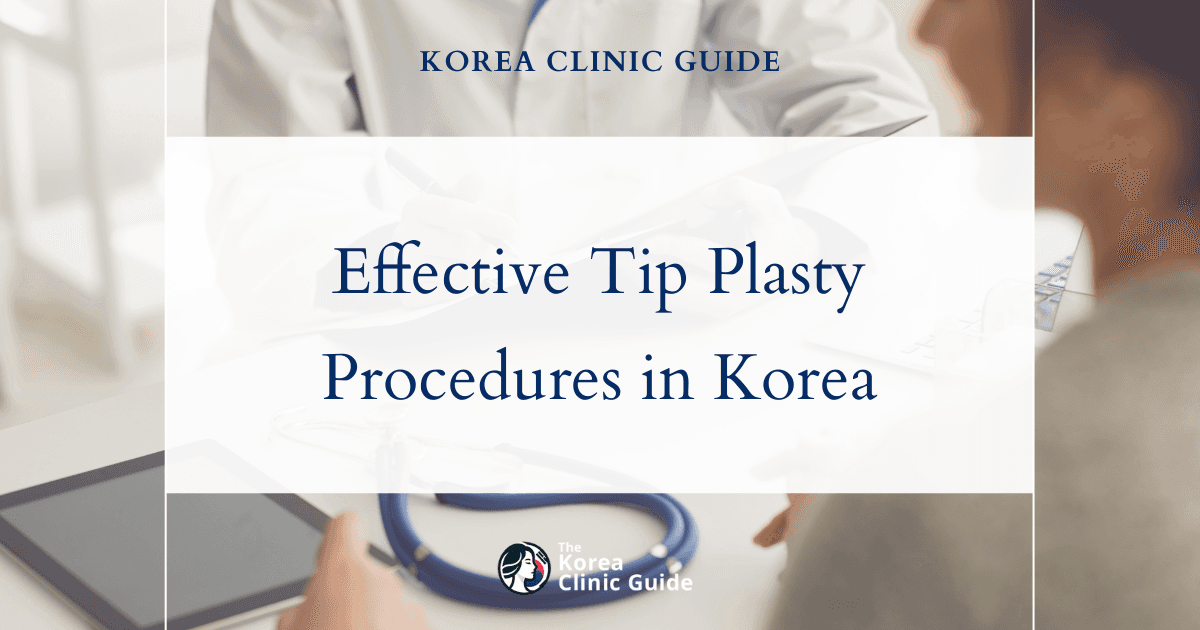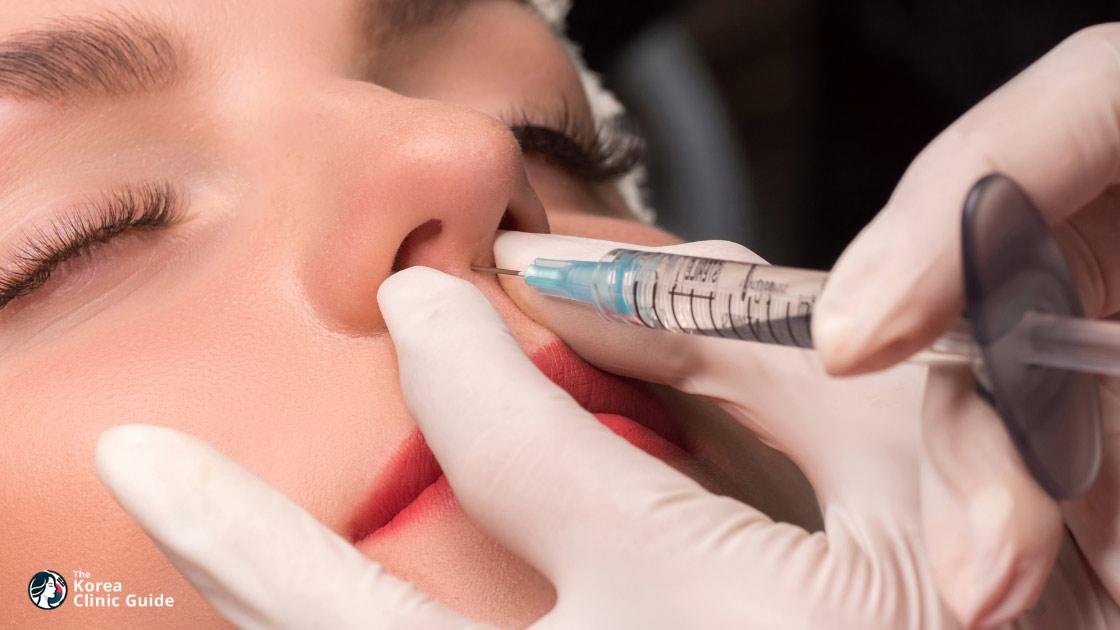Medical Tourism Blog
Discover Effective Septoplasty Procedures in Korea for Correcting Thick Septal Cartilage

Table of contents
- Septoplasty: A Detailed Overview of the Procedure
- Best Clinics in Korea
- Navigating Septoplasty in South Korea for Medical Tourists
- Patient Outcomes and Long-Term Considerations
- Conclusions
- References
The nasal septum is the central wall inside your nose that divides the nasal cavity into two separate airways. Made of cartilage and bone, it provides crucial support and separation for proper nasal function. When this septum becomes abnormally thick, it’s often called "thick septal cartilage." This thickening can narrow your nasal passages, causing breathing difficulties and other symptoms.
A major contributor to this thickening is the Nasal Septal Turbinate (NST), also known as the septal swell body. Located at the front part of the nasal cavity on the septum, the NST helps define the lateral boundary of the nasal valve, a key area for airflow. Studies show the NST is mainly a spindle-shaped area of erectile tissue, similar to nasal turbinates, containing many cavernous bodies that fill with blood and swell, increasing volume.
It’s important to understand that "thick septal cartilage" often involves the NST, which is mostly soft, vascular erectile tissue—not just rigid cartilage. While the NST’s core includes cartilage and bone, most of its bulk is soft tissue like mucosa, blood vessels, and glands. This means the thickness isn’t always a fixed structural problem but can involve dynamic soft tissue changes. Recognizing this helps patients understand that treatment may need to address vascular tissue enlargement as well as cartilage reshaping. An enlarged NST can increase septal thickness from a normal 4-5 mm up to 12-13 mm, significantly blocking airflow.

Common Medical Terms and Pseudonyms
When researching "thick septal cartilage," you might come across various terms. Knowing these helps you communicate better with your doctor. Besides general phrases like "thick nasal septum," "broad nasal septum," or "wide nasal septum," more specific names related to the erectile tissue include:
- Nasal Septal Turbinate (NST)
- Nasal Septal Swell Body
- Septal Intumescence
- Anterior Septal Tuberculum
- Septal Erectile Body
- Tuberculum of Zuckerkandl
- Kiesselbach's Ridge
Causes and Associated Symptoms
A deviated septum, often linked to thick septal cartilage or an enlarged NST, can result from several causes. Some people are born with it due to birth complications or connective tissue disorders. Trauma from sports, accidents, falls, or fights is another common cause. Even without injury, the septum can naturally grow crooked as the nose develops.
The main problem with a thick or deviated septum is nasal obstruction. This can cause difficulty breathing through one or both nostrils, especially noticeable during sleep. Other symptoms include chronic congestion, a feeling of blockage, recurrent sinus infections, headaches, and facial pain. Poor airflow can lead to noisy breathing, snoring, or sleep apnea. Septal spurs or dry mucosa from altered airflow may cause frequent nosebleeds, and mouth breathing can lead to dry mouth (xerostomia).
The NST’s interaction with aging and allergies shows nasal obstruction is often a dynamic, progressive issue rather than a fixed defect. Since the NST is the thickest and narrowest nasal area, even small volume increases can severely block airflow. Aging can weaken skin and cartilage support, causing nasal valve narrowing and worsening breathing, especially with an enlarged NST. Allergies also tend to thicken the NST, explaining why symptoms may worsen over time without new injury. Managing allergies can complement surgery and improve long-term results.
It’s worth noting that septal deviation affects up to 80% of people, but many have no symptoms. Surgery, like septoplasty, is usually recommended only when symptoms significantly affect quality of life. This helps patients understand that treatment is based on how much symptoms bother them, not just on anatomical findings.
Septoplasty: A Detailed Overview of the Procedure
Septoplasty is a reconstructive surgery aimed at correcting a deviated nasal septum. The septum divides the nasal cavity, and when crooked or thick, it can block airflow. Septoplasty straightens or repositions the septum to improve breathing. It is considered a minimally invasive surgery.
Purpose and Benefits
Septoplasty mainly improves nasal obstruction. Benefits include easier breathing, reduced snoring, and relief from sleep apnea symptoms. Clearing blockages also helps sinus drainage, lowering sinus infection frequency. Chronic congestion and pressure often improve, and nosebleeds caused by septal spurs may stop. The surgery can also relieve headaches linked to nasal obstruction. Sometimes, septoplasty is combined with removing nasal polyps or treating chronic sinusitis and obstructive sleep apnea. Overall, it aims to enhance quality of life by restoring nasal function.
Surgical Techniques Explained
The surgical method depends on the septal deviation’s severity and the surgeon’s skill:
- Traditional Septoplasty: An incision inside one nostril lifts the mucous membrane to expose cartilage and bone. The surgeon reshapes or removes displaced tissue to straighten the septum. This approach leaves no visible scars.
- Endoscopic Septoplasty: Using a thin tube with a camera, this minimally invasive method offers a magnified view for precise correction. It’s useful for revision surgeries or combined sinus procedures.
- Extracorporeal Septoplasty: For severe deformities, the septum is removed, reshaped outside the body, and reinserted. Grafts may be used to support the nose and prevent deformities.
- Laser-Assisted Septoplasty: In minor cases, lasers make precise cuts with less bleeding. This technique is less common but offers accuracy and reduced blood loss.
- Combined Procedures: Septoplasty can be done alone or with other surgeries like:
- Rhinoplasty: Reshaping the external nose for function or appearance.
- Turbinate Reduction: Reducing enlarged turbinates to improve airflow.
- Skull Base or Orbital Surgery: In rare complex cases involving the skull base or eye sockets.
The Surgical Process: What to Expect
Most septoplasties use general anesthesia, putting you fully to sleep. Local anesthesia is sometimes an option. Surgery usually takes 30 minutes to 1.5 hours, but simpler cases can be as quick as 10-15 minutes.
Modern techniques focus on minimal invasiveness and less post-op pain. Unlike older methods that used heavy nasal packing and large splints causing discomfort, today’s surgeries often avoid extensive packing, speeding recovery and reducing pain.
The typical steps include:
- Incision: Made inside one nostril (hemi-transfixion or Killian’s incision).
- Mucosal Elevation: The mucous membrane is gently lifted from cartilage and bone.
- Septal Reshaping/Removal: Deviated or thickened cartilage and bone are corrected.
- L-Strut Preservation: A key support structure is kept intact for nose stability.
- Mucosal Repositioning: The membrane is laid back over the septum.
- Stabilization and Closure: Stitches secure the membrane; soft splints or packing may be placed to prevent bleeding and scarring. Incisions are closed with sutures.
Septoplasty is usually outpatient, so you can go home the same day.
Recovery and Potential Risks
Recovery has phases. In the first few days to a week, expect facial puffiness, swelling of the nose tip and nostrils, and mild to moderate discomfort similar to sinus infection pain. Small bleeding and clear nasal drainage are normal for 1-2 days. Gauze may catch drainage. Nasal packs or splints, if used, are removed within 24-36 hours.
To help healing, sleep on your back with your head elevated, avoid nose blowing for 1-2 weeks, sneeze with your mouth open, avoid strenuous activity, and don’t pull clothes over your head. Many return to light work or school after about a week.
Swelling, especially at the nose tip, can last months. Cartilage and tissues stabilize in 3-6 months, but full healing and final results may take 6 months to over a year. Breathing improvements usually appear within weeks.
Possible risks, though rare, include:
- Infection
- Excessive bleeding or hematoma
- Septal perforation (hole in septum)
- Anesthesia reactions
- Recurrence of blockage needing further surgery
- Internal scarring, skin sensation changes, discoloration, or uneven nose appearance
- Decreased sense of smell (hyposmia)
- Cartilage shifting causing renewed obstruction, possibly requiring revision surgery
Best Clinics in Korea
Listed below are the best clinics in Korea:
| Clinic Name | Key Features | Special Techniques |
|---|---|---|
| THEPLUS Plastic Surgery | Located in Garosu-gil, Gangnam, Seoul; world-class expertise in thick septal cartilage rhinoplasty; led by Dr. Kim Taek Kyun and Dr. Jeong Jae Yong; comprehensive approach with over a decade of experience; state-of-the-art facilities spanning four floors; strong commitment to safety, innovation, and patient satisfaction | Thick septal cartilage rhinoplasty; advanced facial contouring; 3D implants; integration of function and aesthetics in rhinoplasty |
| Made Young Plastic Surgery | Located in Gangnam, Seoul; expert team of plastic surgeons and anesthesiologists; prioritizes patient safety; personalized treatment plans; state-of-the-art facilities; strong reputation for surgical and non-invasive facial rejuvenation | Thick septal cartilage procedures; rhinoplasty; cartilage grafting; innovative surgical techniques blending traditional beauty with modern advancements |
| Okay Plastic Surgery Clinic | Emphasizes sincerity, precision, and personalized treatment; led by experienced female plastic surgeon; wide range of services including body contouring, breast augmentation, hairline correction, facial lifting, eye plastic surgery, scar management, and skincare treatments | Thick septal cartilage procedures for rhinoplasty; advanced medical techniques; holistic approach for natural and refined results |
THEPLUS Plastic Surgery
THE PLUS Plastic Surgery clinic, located in the vibrant Garosu-gil district of Gangnam, Seoul, is renowned for its world-class expertise in thick septal cartilage rhinoplasty and other advanced facial procedures. Led by distinguished surgeons such as Dr. Kim Taek Kyun and Dr. Jeong Jae Yong, the clinic combines cutting-edge medical research with personalized patient care. Dr. Kim, a board-certified plastic surgeon and award-winning researcher in 3D implants, is celebrated for his mastery in rhinoplasty and facial contouring, emphasizing a harmonious balance that enhances natural beauty. Dr. Jeong, President of the Korean Society of Plastic Surgeons, brings a unique philosophy that integrates both function and aesthetics, ensuring that each rhinoplasty procedure not only improves appearance but also maintains or enhances nasal function.
At THE PLUS, patients benefit from a comprehensive approach to thick septal cartilage rhinoplasty, supported by a team with over a decade of experience and active involvement in international academic circles. The clinic’s state-of-the-art facilities span four floors, offering seamless care from consultation to post-operative recovery. With a strong commitment to safety, innovation, and patient satisfaction, THE PLUS stands out as a premier destination for those seeking expert rhinoplasty solutions in Korea, particularly for complex cases involving thick septal cartilage. Their dedication to education and continuous advancement ensures that patients receive the most refined and effective surgical outcomes available.
You can check out their website here: THEPLUS Plastic Surgery Website

Made Young Plastic Surgery
Made Young Plastic Surgery Clinic, located in Seoul's prestigious Gangnam district, is renowned for its exceptional expertise and commitment to patient safety in the field of plastic surgery. Specializing in a wide array of aesthetic procedures, the clinic combines traditional beauty ideals with innovative techniques to deliver outstanding results. With a team of highly skilled surgeons and medical professionals, Made Young offers personalized treatments that prioritize both safety and natural-looking outcomes. This dedication makes it the premier choice for thick septal cartilage procedures in Korea, ensuring patients receive expert care tailored to their unique facial structure and aesthetic goals.
Why Made Young Plastic Surgery Clinic is the best choice for thick septal cartilage procedures in Korea:
- Located in the heart of Gangnam, Seoul, a hub for advanced plastic surgery.
- Expert team of experienced plastic surgeons and anesthesiologists dedicated to patient safety.
- Innovative surgical techniques that blend traditional beauty standards with modern advancements.
- Personalized treatment plans tailored to individual facial anatomy and aesthetic desires.
- Comprehensive range of facial procedures, including rhinoplasty and cartilage grafting, ensuring holistic facial harmony.
- Commitment to natural-looking results that enhance confidence and well-being.
- State-of-the-art facilities equipped with the latest technology for optimal surgical outcomes.
- Strong reputation for excellence in both surgical and non-invasive facial rejuvenation methods.
You can check out their website here: Made Young Plastic Surgery Website
Okay Plastic Surgery Clinic
Okay Plastic Surgery Clinic in Korea is renowned for its transformative approach to aesthetic care, emphasizing sincerity, precision, and personalized treatment plans. The clinic is led by a team of specialized professionals, including a highly experienced female plastic surgeon, who guide patients through a comprehensive journey of personal transformation using advanced medical techniques and empathetic care. This dedication ensures that each patient receives tailored solutions that align with their unique needs and aesthetic goals.
The clinic offers a wide range of specialized services, including body contouring, breast augmentation, hairline correction, facial lifting, eye plastic surgery, rhinoplasty, scar management, and skincare treatments. Whether you are seeking thick septal cartilage procedures for rhinoplasty or other aesthetic enhancements, Okay Plastic Surgery Clinic provides expert care with cutting-edge technology to deliver natural and refined results. Their holistic approach and extensive expertise make them a trusted choice for patients seeking high-quality plastic surgery in Korea.
You can check out their website here: Okay Plastic Surgery Clinic Website
Navigating Septoplasty in South Korea for Medical Tourists
South Korea is a popular destination for septoplasty due to advanced facilities, skilled surgeons, and competitive prices. Here’s what international patients can expect:
Process of Getting Septoplasty in South Korea
- Initial Consultation (Virtual): Many clinics offer online consultations to discuss your history, symptoms, and goals before traveling.
- Pre-Operative Evaluations: After arrival, you’ll have imaging like CT scans and nasal endoscopy to plan surgery precisely.
- Surgical Experience: Procedures occur in modern, hygienic operating rooms with expert teams. Most use general anesthesia. Surgery lasts 1-2 hours, often outpatient.
- Post-Operative Care and Recovery:
- Mild swelling and discomfort last 1-2 weeks; light bleeding and bruising may occur.
- Stitches, splints, and bandages are removed 7-10 days post-op.
- Medical tourists should plan to stay at least 7 days, or 14 for complex surgeries.
- Follow-up visits are scheduled during your stay; some clinics offer extra treatments to speed healing.
- Rest, avoid strenuous activity, don’t blow your nose, keep hydrated, avoid alcohol and smoking, and sleep with your head elevated.
- Full recovery usually takes 1-2 months; final results settle in 3-6 months.
Costs Associated with Septoplasty in South Korea and International Comparison
Septoplasty in South Korea is generally more affordable than in Western countries, without sacrificing quality. Prices vary by case complexity, surgeon reputation, and clinic.
Average costs in South Korea range from about USD $4,000 to $10,200, especially if combined with other surgeries like rhinoplasty. Some clinics may charge foreigners more.
Here’s a comparison of average septoplasty costs worldwide:
| Country | Average Price Range (USD) |
|---|---|
| South Korea | $4,000 - $10,200 |
| Turkey | $1,000 - $2,500 |
| India | $700 - $2,000 |
| Poland | $800 - $4,000 |
| Mexico | $2,000 - $4,500 |
| Thailand | $2,000 - $3,950 |
| Spain | $3,000 - $7,000 |
| Singapore | $2,200 - $8,400 |
| United States | $5,000 - $28,200 |
| United Kingdom | $5,000 - $10,000 (€) |
| Canada | From $5,999 |
South Korea offers a great balance of quality and cost, often lower than the US, Canada, and UK. While countries like India and Turkey may be cheaper, South Korea is known for advanced technology and experienced nasal surgeons. Many clinics provide all-inclusive packages covering surgery, anesthesia, hospital stay, and follow-ups, simplifying the process for international patients.
Patient Outcomes and Long-Term Considerations
Patients treated for "thick septal cartilage," often involving a deviated septum and enlarged NST, usually report major improvements in breathing and quality of life. Septoplasty effectively relieves nasal obstruction, reducing congestion and breathing difficulty.
Many notice better sleep and less snoring after surgery. Some describe the ability to breathe freely through both nostrils as life-changing. Combining septoplasty with cosmetic rhinoplasty can also boost confidence.
Though initial healing is quick, full recovery takes months as cartilage and tissues settle. Results are generally stable, but nasal tissue can shift, causing symptoms to return. In such cases, a second septoplasty may be needed. Following your doctor’s post-op instructions carefully is key to a successful outcome.
Conclusions
"Thick septal cartilage," often due to an enlarged Nasal Septal Turbinate composed mainly of soft erectile tissue, is a common cause of nasal obstruction. This condition can lead to breathing difficulties, congestion, sinus infections, headaches, and sleep problems. Surgery is recommended mainly when symptoms affect quality of life.
Septoplasty is an effective, minimally invasive surgery that reshapes or removes obstructing tissue to improve airflow and reduce symptoms. Advances in technique have made recovery easier and faster than before.
South Korea offers excellent options for septoplasty with skilled surgeons, modern facilities, and competitive prices, making it a popular choice for medical tourists. Patient experiences generally show significant breathing improvements and enhanced well-being, though full healing can take months and sometimes a second surgery is needed. Following post-operative care instructions is essential for the best results.
References
1, 2, 3, 4, 5, 6, 7, 8, 9, 10, 11, 12, 13, 14, 15, 16, 17, 18, 19, 20, 21, 22, 23., 24, 25, 26, 27, 28, 29, 30, 31















